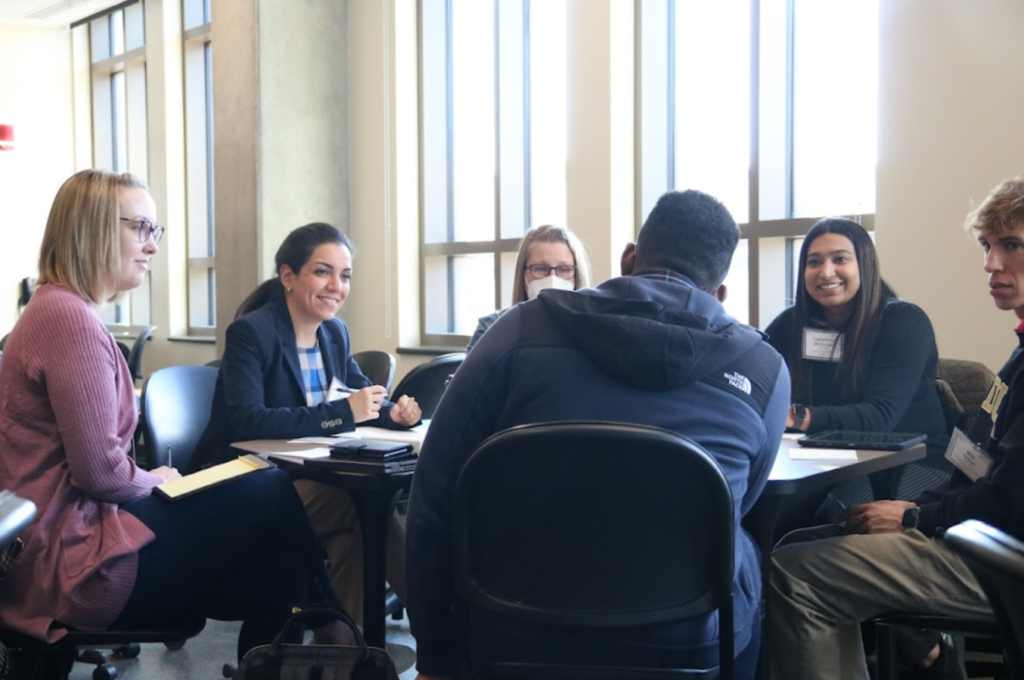Purdue researcher studies the impact of artificial intelligence on student learning
Since earning her doctorate from Purdue University in 2022, researcher Lakshmy Mohandas has been passionate about integrating technology into the classroom. When OpenAI released a large language model (LLM) called ChatGPT, Mohandas shifted her sights toward integrating artificial intelligence (AI) inside the classroom.
“At the time ChatGPT was released, I was involved in various technology conferences and groups,” she reflects. “Everyone was talking about AI, and I was really excited.”

Through grant funding provided by Purdue’s Innovation Hub, Mohandas started her exploration of AI by asking students about their perceptions of the new technology. She was surprised to find that many were apprehensive about it.
“Some had never heard of AI. Some were already into it,” Mohandas says. “There were so many disparities at that point, and I didn’t have any clue what would happen.”
Some common themes Mohandas noticed were that students wanted better dialogue from their instructors on how to navigate AI, and many instructors were worried that students would use AI to cheat. Mohandas drew a connection between these concerns and those that were discussed at the beginning of remote learning.
“Like remote learning, instructors didn’t know what was happening with AI,” she says. “They didn’t know if students were listening to content and engaging with it or if everything they submitted was just copied and pasted from ChatGPT.”
Tatiana Ringenberg, assistant professor in computer information technology and one of the faculty members in Mohandas’ focus group, noticed that the way students use AI has drastically changed since the initial release of ChatGPT in 2022.
“Early on, students used it for everything. Everyone was so excited about what it was going to do for them,” Ringenberg shares. “Now I have started to see a lot more mindful use of AI, like checking grammar or generating ideas.”
In November 2023, Mohandas presented preliminary results from her research during a monthly meeting of Purdue’s Teaching and Learning Community of Practice. Her research found that both faculty and students primarily use AI to gather information, check writing and grammar, and generate ideas for essays and assignments.
“Many students use AI for personalized learning,” Mohandas says. “It’s very interesting and can help students if their instructors or teaching assistants are not around.”
Mohandas also found that the main concerns from instructors about AI were related to students plagiarizing information from AI tools that gathered data from untrustworthy sources.
Using that information, she started integrating AI into her classroom to supplement students’ learning and prepare them for the real world.
“As instructors, our main duty is to prepare students for the world,” Mohandas reflects. “So when we don’t talk about these major shifts in technology, it’s our students that suffer.”
In her design methods class, Mohandas encourages students to use AI for idea generation and practice interviews. This has encouraged Ringenberg to implement a similar activity in her cyber ethics course.
“We both realized early on that treating AI as a sounding board was a great way to give students the opportunity to receive feedback,” Ringenberg says.
This process helped students in her class reword interview questions before talking to actual humans and ensure they were receiving the responses they wanted.
Mohandas said she has always been one to embrace new technologies in her classroom. Inspired by remote learning practices during the pandemic, she now utilizes a “hybrid-flexible” model in her classrooms. Students can participate in-person, online or asynchronously; whichever works best for their learning style. Mohandas believes that as the workplace changes, so should her classroom.
“Previously, we saw laptops and iPads change everything,” Mohandas reflects. “Today, it’s AI. Tomorrow it could be something very different.”
For those interested in learning more about the use of AI in the classroom, please visit the Teaching and Learning Community of Practice website.
Members of the Purdue community can also sign up to receive a monthly email newsletter covering teaching and learning-related AI topics at Purdue.
Last updated: Feb. 9, 2024

Author: Malini Nair, AI Communication Assistant for Student Success Programs, nair112@purdue.edu